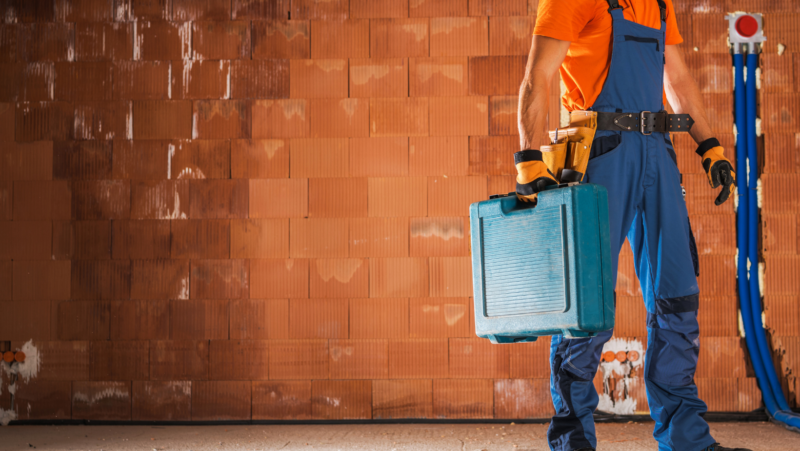
Author: Corbin Mintz, published: October 22nd, 2021
3 Techniques to Improve Floor Scheduling as a General Contractor
Introduction:
As a general contractor, you know that magical point when the project is moving along, and your final competition date is on the horizon. However, you know your project team still needs to make sure the final finishes are scheduled and can be installed without creating a delay.
Your project manager assesses the project and feels sure that there will be no issues in waiting to call the flooring subcontractor in the last few weeks, to add those final details because they  did a great job of providing detailed pricing.
did a great job of providing detailed pricing.
However, it is almost never that easy because there is always a basic element overlooked prior to scheduling. DCO’s Sr. Project Manager Corbin Mintz has been working on large complex job sites for years, and through his experience is providing 3 useful tips for every general contractor on how to improve their flooring installation on each project, every time.
Proper Prep Work Prevents Future Problems
Before scheduling your flooring contractor to begin the installation of soft flooring products such as broadloom carpet/carpet tile, LVT/LVP, or Sheet Vinyl/Vinyl Tile the contractor should request the Flooring Subcontractor to perform moisture testing in the slab to verify the Relative Humidity of the substrate and that the Ambient Temperature of the space meets the requirements for the specified adhesive.
Moisture testing results should be shared with the Contractor to advise of the conditions and the Flooring Subcontractor should provide remedies if needed. Also, verify with the Flooring Subcontractor that the space does not require climate control per the product specifications to allow for adequate acclimation of products to avoid installation failure.
In Hard Tile installation, the Contractor should anticipate a review by the Flooring Subcontractor of the floor and wall substrates to verify flatness per TCNA standards. After review, the Contractor should expect a report detailing the findings and recommendations to remedy in order avoid minimal tile lippage. In addition to the substrate evaluation prior to the start of the tile installation, the Contractor is advised per TCNA standards to have the permanent lighting installed and burning to further avoid lippage that is concealed in dim light. This is especially important on walls to receive wall tile with “wall washing” lights.
3 Ways to Improve your Finish Scheduling
1) Schedule Flooring after the final paint
Schedule flooring to be installed after the final paint is done. Consider scheduling your flooring to be installed after final paint to avoid overspray (paint touch-ups are easier/cheaper than replacing damaged flooring). Planning a demolition route inside and outside that is set up to a place where waste can go will help to keep the site clean and clear of debris. This is especially important when there are noxious chemicals involved in the process. A clean and ventilated area will help workers to not only be safe but also help with the overall demolition process. Placing a fan in a window or doorframe can also aid in removing contaminants and keeping up a pressure barrier. 
2) Schedule flooring after all overhead/in-ceiling work is completed
Schedule your flooring to occur after all overhead/in-ceiling work is completed to avoid lifts, scaffolding, ladders from damaging your new floor. This will protect the floor from damages caused by other installations during the project. A clean-as-you-go with the appropriate cleaning strategy will allow you to keep the floor from being damaged, while also keeping up with the schedule so there isn’t a mess that has to be cleaned up last minute before the deadline.
Also, the cabinets should be scheduled to be installed after flooring to minimize the shimming required by the millwork subcontractor and allow for future renovations to consider excluding flooring if cabinets are desired to be changed.
3) Always consider appropriate floor protection
The extra cost upfront can prevent costly repairs later in the project. While it may be easy to forgo a floor covering to suspend project delays, it’s always better to properly protect the floors to avoid any damage until the project is completed. Floors can be covered with paper or plastic, depending on the medium used in the installation. This keeps the floor from being damaged as workers continue their work in rooms where the flooring has been installed. Without the proper protective covering, there is no barrier between the floor and heavy traffic, which could lead to scratches and defacement of the flooring. By protecting the flooring, keeping a demolition route in place, cleaning as you install, and making sure to properly ventilate and seal the area according to the product guidelines, you are guaranteed to have a successful installation that will allow your GC’s a smooth scheduling process while keeping the flooring clean and free from damage.
Conclusion:
When looking to install flooring properly, general contractors must know the importance of how to implement these techniques to keep the project on schedule so that the expectations of the end-user are met. When it comes to keeping your floor scheduling process clean, you must be proactive, and not just reactive in all situations. Projects that are scheduled properly by using these techniques will ultimately contribute to the efficiency of the project, the satisfaction of the customer, and the durability of the flooring as a whole.
_______________________________________________________________________________________________

About the author: Corbin has been in the construction industry for 11 years with 6 years of experience as a General Contractor, 2 years of experience in Commercial Millwork Sales/Estimating, and 3+ Years of experience as a Flooring Contractor. Corbin has managed projects ranging from $50K-$7MM in multiple market segments from Multi-family, Healthcare, Hospitality, Corporate Interiors, Education, and Industrial. Proper Floor preparation has been critical to providing a quality installation on all the projects Corbin has managed and has experience in all facets of subfloor preparation including skim coating, patching/filling, grinding/scarifying, self-leveling, moisture mitigation, mud bed installation, and concrete installation. Feel free to reach out to Corbin Mintz for more information on what to look for before you schedule your next flooring installation. Email: cmintz@dcocf.com
About the firm: DCO Commercial Floors is a nationwide flooring dealer that is committed to being a flooring solutions leader for all finishes, bridging the gap between traditional floor covering and modern access flooring solutions. We provide comprehensive project management so that your project is smooth from the estimating stages to breaking down the bid, and procurement, from install to closeout. DCO will provide and deliver on all facets to become the partner of choice for your project.

